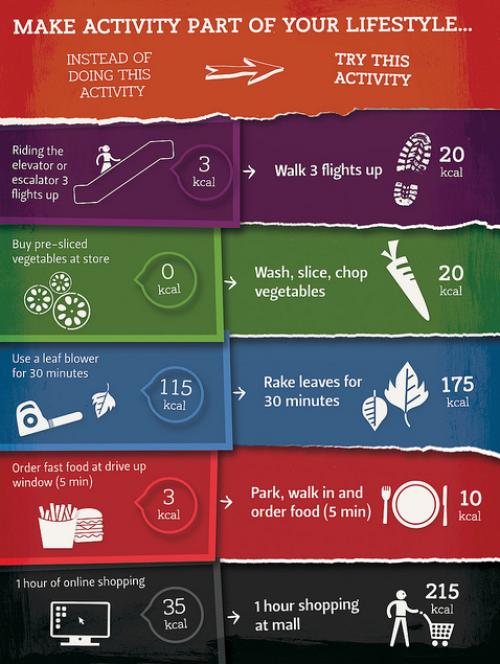 Researchers from Oregon State University studied 6,000 American adults and found that a generally active lifestyle (rather than structured exercise at the gym) can be just as beneficial in improving health outcomes - including preventing metabolic syndrome, high blood pressure and high cholesterol.
Researchers from Oregon State University studied 6,000 American adults and found that a generally active lifestyle (rather than structured exercise at the gym) can be just as beneficial in improving health outcomes - including preventing metabolic syndrome, high blood pressure and high cholesterol.
Instead of exercising at the gym, participants found ways to make movement a part of their daily life. For example, participants could take the stairs instead of an elevator. Or walk somewhere nearby instead of driving. Use a push lawn mower instead of a sitting mower. Pace around or do jumping jacks during a commercial break.
According to Paul Loprinzi, lead author of the study, these simple additions of movement have a large and measurable effect on overall health:
We encourage people to seek out opportunities to be active when the choice is available. For example, rather than sitting while talking on the phone, use this opportunity to get in some activity by pacing around while talking… People get it in their minds, if I don’t get that 30 minutes, I might as well not exercise at all. Our results really challenge that perception and give people meaningful, realistic options for meeting the physical activity guidelines.
In fact, researchers found that 43% of the people who participated in these short bouts of movement were able to meet the government’s guidelines for recommended exercise - compared to 10% of Americans, overall.
This news is especially exciting for the many people who claim that there isn’t enough time to exercise. Everyone can make a few seconds or a few minutes to include more movement in those activities that we’d be doing anyway. And because those extra minutes translate to real improvements in overall health, there’s real reason to do so.








